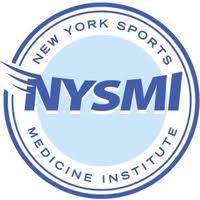At the New York Sports Medicine Institute, our state-of-the-art onsite diagnostic capabilities include digital X-ray and high-field extremity MRI technology (elbow, wrist, hand, knee, ankle, and feet), providing convenience to patients and enabling our medical team to efficiently diagnose musculoskeletal conditions. These advanced tools are an integral part of New York Orthopedics, allowing our board-certified orthopedic surgeon in NYC to accurately assess injuries and monitor treatment progress.
In addition to diagnostics, digital X-rays and extremity MRI are frequently used by our orthopedic doctors in NYC to evaluate healing over time. As with all medical personnel at our orthopedic surgery practice, our X-ray and MRI technicians are expertly trained, with years of experience producing precise, high-quality images for review. Using low-level, targeted radiation, X-rays provide a painless yet highly effective way to pinpoint issues and guide treatment. Whether you’re visiting for surgical care from an orthopedic surgeon New York patients trust or a non-surgical evaluation from the best orthopedic surgeon NYC has to offer, our imaging technology ensures you receive the most accurate and comprehensive orthopedic care possible.


